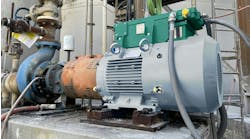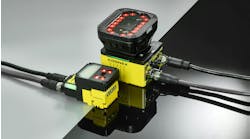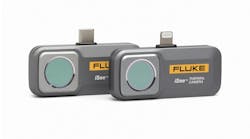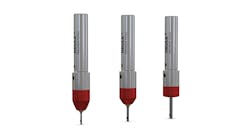According to data presented by the Forging Industry Assn., seamless ring shipments in the U.S. and Canada have grown 139% in value over the past three years, from $607 million in 2004 to $1,450 million in 2007. This trend has been clear to Simufact Engineering GmbH, which has watched demand increase dramatically for its software that simulates the ring-rolling process.
Simufact has offered simulation products and services since 1995, and with support and funding from early adopters it has invested significantly to develop its technological progress. These capabilities have reached a new milestone with the release of a special module for ring rolling, and this capability is available for use in the design departments of large and small companies.
Until recently, Simufact’s plan had been to make the ring-rolling simulation capability available with the release of Simufact.forming 9.0, in Q1 2009. Simufact.forming is a fully integrated software platform for metal-forming simulation that uses both finite-element and finite-volume analysis. Due to strong market demand, the ring-rolling developments were accelerated and are available now in a special service pack release for version 8.1.
High flexibility
The special rolling module allows design and optimization of hot and cold ring rolling, axial profile tube rolling, tangential profile ring rolling, and flow spinning. The common characteristic is that each of these is a highly flexible manufacturing process. One machine can produce rings with different diameters, section thicknesses, or heights, without a need to refit the tools. The tool-motion kinematics are, mostly, very complex, and include feedback from the spatial movement and deformations of the ring itself.
A good example is the tangential profile ring-rolling process. In this process, a main roll is powered in both rotational and translational directions. Mandrel and wedge rolls are allowed to pivot freely as they’re fed in the translational direction or fixed in space. Often, a supporting roll is added, the motion of which is coupled to the translational movement of the main roll.
Preparatory steps like pressing and punching also are needed for the billet production, while manufacturing steps like heat-treatment take place after rolling. Because the rolling module is fully integrated into Simufact.forming, mapping of the complete process chain can be done in a single program, from pre-operations to rolling to postoperations.
A typical example is the hot ring-rolling process for a differential gear. The pre-pressing, finish pressing and punching can be simulated using an axial symmetric forming process, after which the work-piece is expanded into a 3D ring billet. This is followed by radial ring rolling and, finally, axial die rolling.
Software requirements
The requirements on simulation software for ring rolling are demanding because the processes are particularly computer-intensive. There is an incremental forming zone, with unstable local contact. As a result, a large number of intermediate calculation steps have to be completed.
Furthermore, very often the feed or the rotation of the rolled steel is determined by friction, which must be accounted for with a high degree of accuracy.
Last, but not least, elastic effects of the material influence the behavior of cold-rolling processes and these must be taken into account during simulation, too.
The new rolling module in Simufact.forming meets all these requirements. It allows for a simple process setup and an economic calculation of rolling processes. New CAD interfaces allow accurate mapping of the tool geometry contours. Easy model setup is achieved by a new positioning capability, enabling automatic positioning in all spatial axes.
The rotational axis of tools, as well as a local coordinate system, are easily defined and coupled to the original geometry. This axis and the local coordinate system can be visualized, and are used to define the tool kinematics in space and time. During model preparation, it is possible to animate the complete tool kinematics, and thus verify correct definition before submitting the actual simulation.
Because Simufact.forming uses hexahedral elements instead of the more common tetrahedral elements, it is able to simulate ring rotation accurately. The hexahedral elements exhibit excellent rigidity characteristics, and allow a very good mapping quality of the friction influences. A rotating work-piece poses special challenges, and a new algorithm for numeric stabilization was added to assure a stable, fast converging solution.
The rolling module comes with a new meshing technology that allows a ring-oriented, contour-dependent meshing of the work-piece, which results in high-quality mapping of the circular shape, good contact attributes, and an optimized number of elements. The calculation is further optimized by means of parallel computing techniques, where the billet is automatically segmented into adequate domains to reach the most efficient solution.
| For further details on Simufact.forming, contact the supplier at tel. 734-238-2173, or visit www.simufact-americas.com |
Andre Hardtmann, of the Technical University of Dresden, successfully applied the new ring-rolling model to the axial profile tube rolling process. The results of his experiment were presented at the recent Simufact round-table conference, in October in Bamberg, Germany. For this process the new contour-sensitive meshing technology is critical, and reduces the CPU-time by 50-80%. The axial profile tube rolling process is characterized by rolls that pivot freely, and are fed in a translational direction. The mandrel and the holder are powered rotationally.










